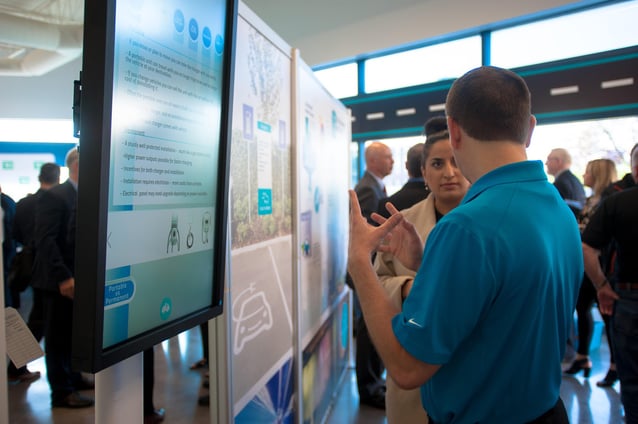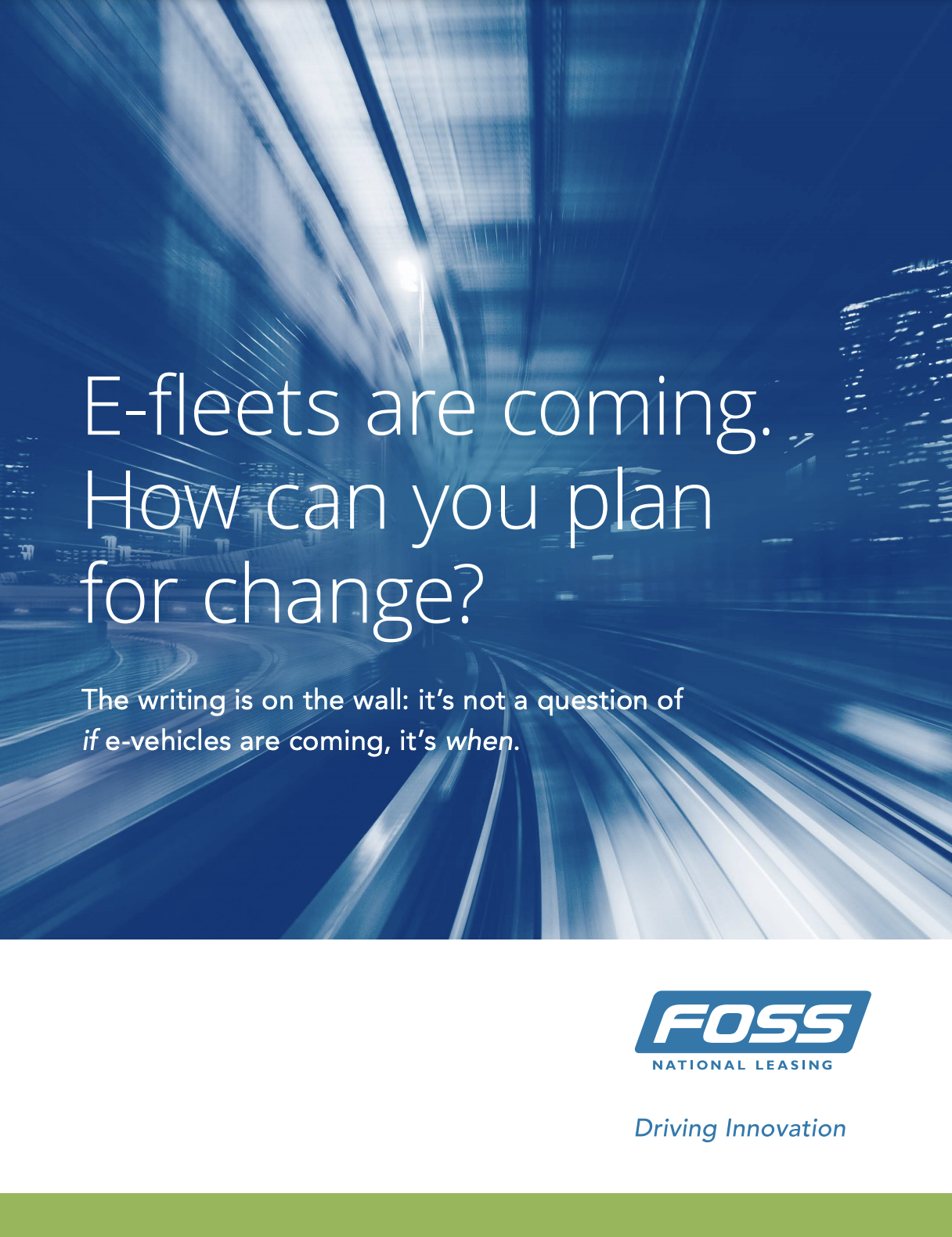
What are the biggest barriers to EV adoption for fleets? For many fleet managers, there are major concerns around range anxiety, and an uncertainty about the cost benefits of electric vehicles. But there is good news!
The fact is, there are clear cost saving opportunities for those who adopt electric vehicles. And advancements in public charging, including workplace charging, ensure the vehicles remain powered up, all but eliminating fears of running out of juice.
In this interview with Dav Cvitkovic of Plug’n Drive, we take a deeper look at these issues, and learn what Plug’n Drive is doing to educate people about electric vehicle adoption.
INTERVIEW WITH PLUG'N DRIVE COO DAV CVITKOVIC:  ADDRESSING KEY ISSUES OF ELECTRIC VEHICLE ADOPTION
ADDRESSING KEY ISSUES OF ELECTRIC VEHICLE ADOPTION
Q: Can you give us a bit of background about Plug’n Drive?
This is truly an innovative initiative. The idea was to do consumer research on the barriers to electric vehicle uptake, and accelerate their introduction by educating people, including fleet managers, on the benefits of this well-developed technology.
We realized that there was a void in the marketplace about providing unbiased electric vehicle information. All the information out there was manufacturer-specific and competitive. We felt that people needed to understand the whole story and wanted to provide them with vehicle options.
(Related post: A Fleet Manager's Guide to Electric Vehicle Types)
We’ve been able to mobilize both industry and government to embrace our vision and support a variety of programs designed to increase EV adoption. These include:
- advocating for consumer incentives
- working closely with businesses to educate fleet managers on the payback they can receive by adding EVs to their fleets
- developing workplace enticements such as on-site charging infrastructure to encourage EV use.
While Plug’n Drive started out as a community outreach and education program, we’ve evolved into a one-stop resource for EVs, including charging, policy development, and research. Initially, we would take cars on the road, to community fairs, car shows or businesses to give people a hands-on experience. However, as more and more interest in EVs started to take hold, we realized it was better to have a one-stop-shop because there’s only so many cars you can take on the road.
In 2017, we launched the Electric Vehicle Discovery Centre in Toronto - an experiential learning facility where people can discover the world of EVs. Change is taking place rapidly in the EV space and we believe our business model can accelerate electric vehicle adoption.
At the Centre, we are working with a wide variety of manufacturers and industry suppliers to provide the visitor with a clear view on the many options to consider as they adopt this technology.
Specialized, non-sales staff offer unbiased answers, numbers and costs. We share information about home charging through our Charge My Car program as well as building a community of people who become EV advocates.

The goal is to take consumers on an educational journey, from understanding the environmental and economic benefits, all the way to the variety of charging options available and then have them tell the story to their network.
Q: Fleets are a big deal. What are some of the obstacles that need to be overcome as fleets embrace EVs?
In general, for both consumers and businesses, the economic value proposition of EVs is not yet well understood - there are a lot of electric vehicle myths out there. One of the main obstacles is educating fleet managers on what the benefits of EVs actually are.
Of course a major priority for fleet managers is considering variable costs, such as fuel and maintenance. Well, these are two costs that can be offset through EV adoption. With an electric vehicle, there is no longer the need to gas up!
And in terms of maintenance, there are just fewer moving parts in an EV than in a gas vehicle. There are many studies that have proven that EVs are the lower cost option, in terms of operational costs.
For example, Pollution Probe conducted a study in 2013, focused on evaluating the business case for EVs in vehicle fleets. The year long study compared operating costs between internal combustion powered cars and battery electric powered vehicles.
Their team analyzed the data over a variety of factors and found that, in every case, EVs were the lower-cost option. The research also indicated that the initial (and higher) cost of EV’s was offset by much lower operating costs. The payback period was just a few years.
(Related post: How to Prepare your Fleet for Electric Vehicles)
Additionally, from an environmental perspective, they found that electric vehicles produced 21x less C02 than gas powered vehicles. The report substantiates this statement. For companies making a commitment to sustainable practices, this type of action goes a long way towards demonstrating leadership.
Q: Are there any other jurisdictions that have created a showroom and learning environment similar to what you have created at Plug’n Drive?
We are the first in the world! This was a culmination of Plug’n Drive working together closely with industry and the Ontario provincial government to solve a complex issue. EV’s are a new technology and they have a place in our future’s transportation needs - especially with transportation being the largest source of greenhouse gas emissions in Ontario.
To answer your question about which other jurisdictions have a similar centre, we’re the only one in Canada. There is a variation of our business model in Portland, Oregon, and more recently, a very similar facility has been built just north of Cambridge in the UK. Those are the only two I’m aware of. However, we have received many visits from other provincial and international jurisdictions who have expressed interest in developing similar centres.
We’re really proud of the Centre. It’s achieving all the benchmarks we’ve set for ourselves and more. We’ve done a lot of research to determine how behaviour changes from the desire to purchase to EV, through to actually purchasing one.

We’ve had over 8,500 visitors since opening in late April 2017 and nearly 3,000 test drives. After visitors come to the centre, we survey them. So far, what we’ve found is, 23% have since purchased and EV, and 94% plan to do so in the near future. We feel very strongly about committing to EV sales. Ontario EV sales more than doubled in 2017, representing a phenomenal year over year growth rate of 120%. Needless to say we’re thrilled with those results.
Q: Given the momentum of the movement, can today’s charging infrastructure accommodate the increase in EVs?
That would depend in the province you reside in. In Ontario, public charging infrastructure needs further development. On a per capita basis, Ontario is behind provinces such as BC and Quebec. However, we are encouraged with the new workplace charging systems being installed, which has proven to be the second highest charge point for EV users.
The nice thing about EV charging requirements is that the majority of “charging” happens after business hours - or after peak demand when electricity is supposed to be cheaper. EV’s will help rationalize the demand fluctuations.
Q: Is workplace charging government mandated, or are companies making the decision to install it?
Our most recent research published in May 2017 indicates that range anxiety is the second highest barrier to adoption, so building the charging infrastructure is essential to rolling out this technology.
Until recently, workplace charging was not predominant in Ontario. In January, we worked with the Ministry of Transportation and they announced the first-ever workplace charging incentive program. They allocated up to $5 million for workplaces to apply to this fund to build out a network of EV charging infrastructure at workplaces.
We assisted in providing informational webinars in February and one month later, the $5 million has been completely allocated! So workplace charging is factor that we know will induce more demand for electric vehicles going forward.
However, it’s one thing to install the charging, it’s another thing to then get employees to adopt electric vehicles. Once companies install workplace charging stations, Plug’n Drive is offering educational sessions with employers and employees on the benefits of driving EVs.
Workplace charging also offers significant upside potential for employers. It’s not only an important employee recruitment and retention tool, but establishing leadership around sustainability is just good business and can potentially contribute towards LEED certification. Conversion of corporate fleets to EVs can also lead to operational savings.
In terms of reducing the degree of range anxiety, installing workplace charging has been shown to be an incentive for consumers to adopt electric vehicles. For example, The U.S. Department of Energy issued a Workplace Charging Challenge and found that employee access to workplace charging increased their likelihood to adopt an EV by 6 times.
It really gives people the confidence that they will have enough juice in their car to get home at the end of the day!
Q: Who pays for the workplace charging stations - the employee or the employer?
Typically the employer pays for the purchase and installation cost of the EV charging stations, site preparation, and finishing costs, including signage. This also includes any necessary electrical equipment upgrades, such as energy management equipment, transformers, and electrical panel upgrades.
In terms of ‘cost to use’ charging stations, we recommend that workplaces charge their employees a fee for usage through hourly, daily, monthly or annual passes. However, employers must not generate revenue fees that exceed the cost of electricity.
Employers must also have EV parking spaces dedicated to employees during business hours and fully operational year around. After business hours, businesses might consider making the EV spaces available to the public. Ultimately, it’s up to each organization to make those decisions and determine the best course of action.
Q: What’s one piece of wisdom you have for companies looking to put EVs into their fleet?
Do the math. From both a consumer and business perspective, the economics of EVs just make sense.
From a total cost of ownership perspective, EV upfront costs can be offset through government incentives, plus savings on fuel and maintenance down the road. An EV owner or driver can save up to $2000 a year per vehicle! Those are facts that should not be overlooked.
Early EV adopters have done the math and realize these savings. Our job is to educate the mainstream public about these benefits. Of course, there are also benefits in terms of the environmental footprint, corporate sustainability practices, and corporate image.
Final thoughts
When it comes to businesses adopting electric vehicles for fleet purposes, there is no one size fits all solution. We encourage organizations to assess the financial reality through a Total Cost of Ownership (TCO) analysis and determine if the business case is evident and what the payback period is.
Make a measured decision by consulting an expert. They can help you better understand EV use, associated savings and downstream benefits.
Next Step:
Download our white paper - E-Fleets Are Coming: How Can You Plan for Change? It discusses the key benefits and challenges associated with EVs in-depth, and provides expert advice on key considerations to make before going electric.
Get to Know the Author
Basil Marcus is the president of Foss National Leasing and LeasePlan Canada. With a lifelong passion for automotive, he journeyed from business development to leading one of Canada's top fleet management companies.
Meet our team






